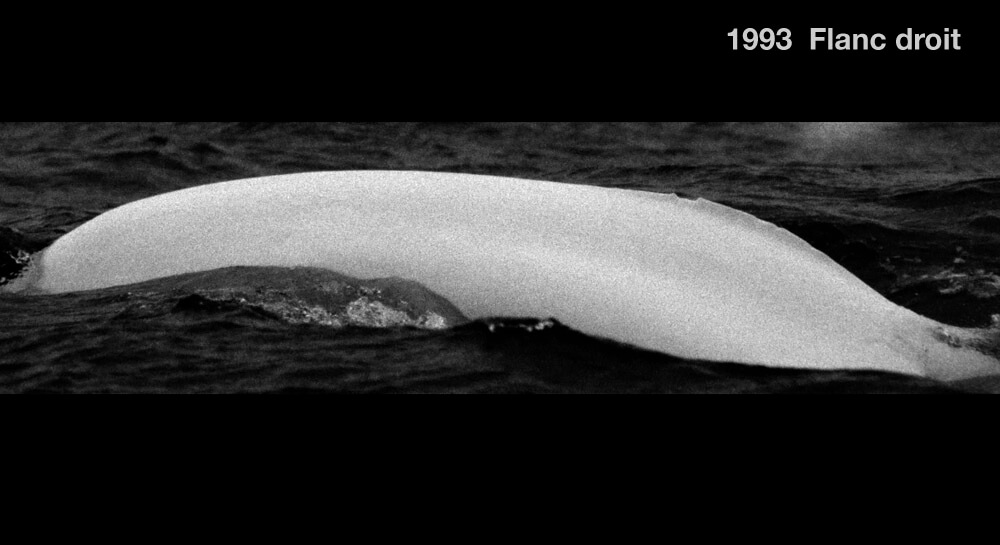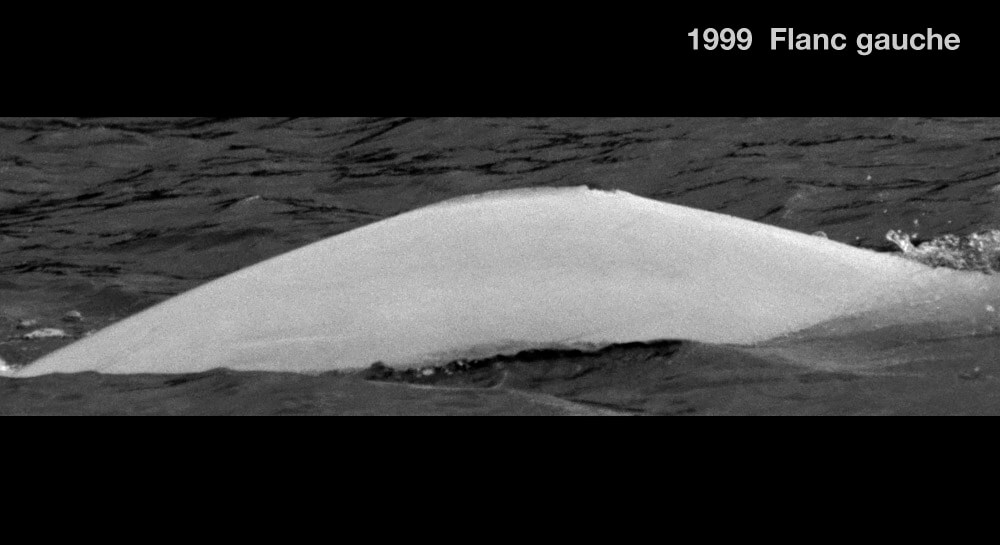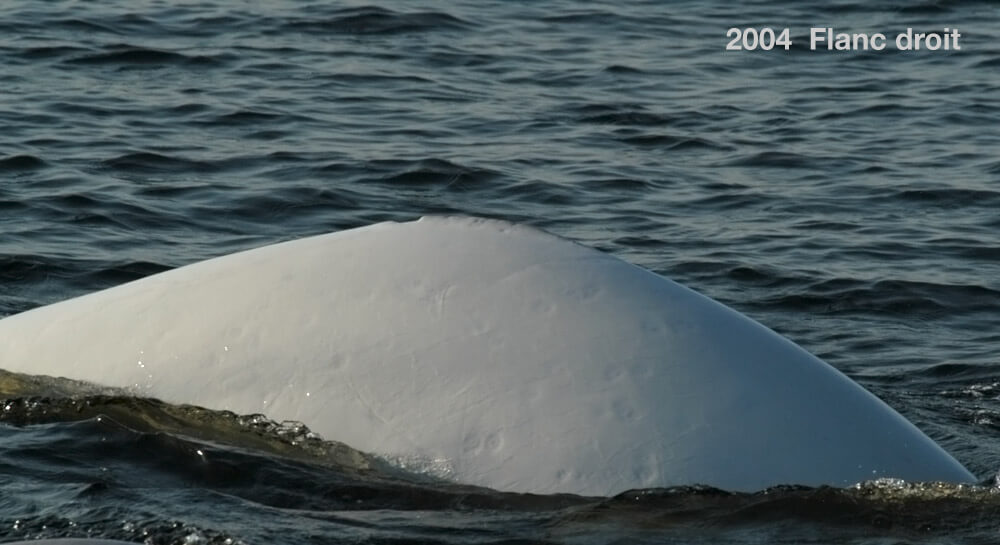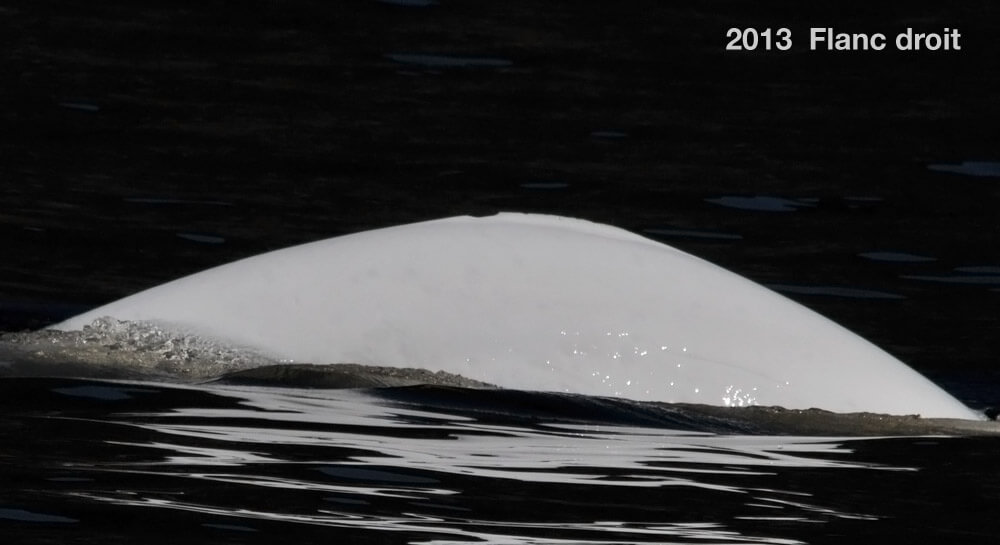Amalena
Beluga

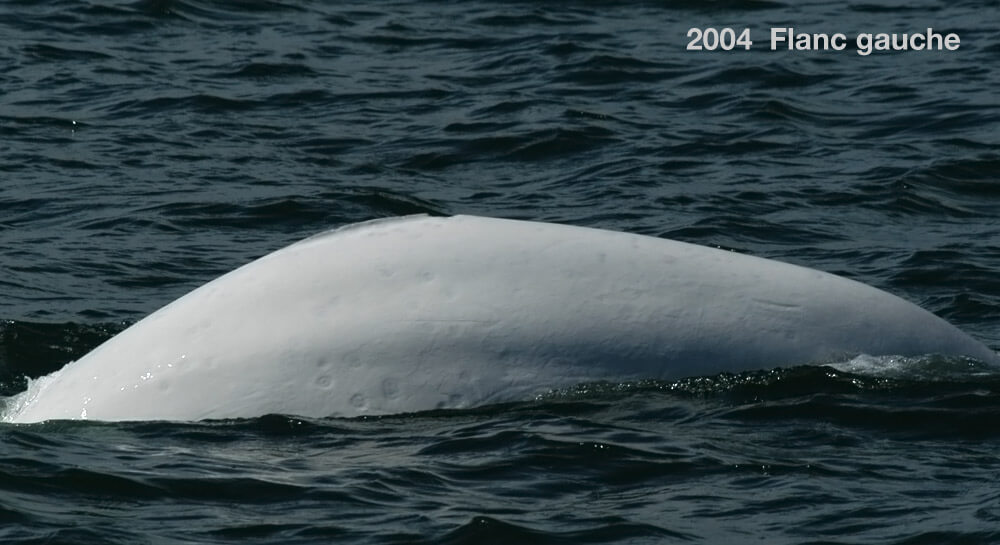
Adopted by Road Scholar (previously Tadoussac Elderhostel) - Benny Beattie
-
ID number
DL0393
-
Sex
Female
-
Year of birth
Around 1990
-
Known Since
1993
Distinctive traits
Amalena is easily recognizable even if she has no scar on her sides. She is identified by a large notch with straightened ends, at the end of the dorsal crest and with the other small notches on its crest.
Life history
Known since 1993, it was slightly grey and since 2004, it has always been noted white. She would therefore have been born around 1990.
Her habits, size and company suggest that she is a female from the Saguenay community. Her sex was confirmed by biopsy in 2000 : she was indeed a female.
Observations history in the Estuary
Years in which the animal was not observed Years in which the animal was observed
Latest news
It’s a special day aboard the Bleuvet… Our research boat is host to guest researcher Valeria Vergara from the organization Ocean Wise, who has collaborated with GREMM every summer since 2015. The team is also accompanied by a film crew that is putting together a documentary on beluga research. To kick off the day, we enter the Saguenay River. Our other boat was carrying out spotting activities earlier in the day, so we know we will find belugas here.
We find a herd moving up the Fjord. Discovered earlier this morning by our colleagues, this herd includes Amalena. We deploy our drone to try to document the animals’ build. Meanwhile, Valeria records underwater communication using a hydrophone. We stay with the belugas for almost an hour before leaving. Will we succeed in recognizing Amalena when we analyze our videos and recordings?
Belugas are even earlier risers than we are! It’s 7:20 in the morning, and all eyes are on Baie Sainte-Marguerite. Already, a herd of twenty or so individuals is gathered in the bay. Did they spend the night beneath the tower while we were gone? By the time we get situated atop the tower, it’s 7:45. We begin photo-ID’ing the belugas. The group is mostly composed of adults: 20 pure white animals and three that are still grey, meaning they are no more than 16 years old. Amongst the adults, we recognize comrads Vita and Mirapakon and females Amalena and Athéna, who are also companions. We also note the presence of Pascolio, a female with a deformed back. She, too, belongs to the Saguenay community of females. The belugas linger in the bay for three more hours before they depart. Two days later, we were deeply saddened to find out that Athéna had died. Will analysis of the sound and video recordings made on July 27 clue us in on the last moments of this 45-year-old (at least) female’s life?
The sky greets our team on board the Bleuvet with a light mist. We’re sailing off the coast of Île Rouge, near Tadoussac, when we spot a herd of eight belugas including adults, young and one newborn. For an hour, we attempt to approach the herd to photograph each one of the animals, but they disappear in the waves and avoid us. Now the belugas that were once all around us have disappeared. After about thirty minutes of waiting, we’re just about to leave, when suddenly we see the herd reappear as it makes its way up the Saguenay. We are able to photograph them, but most of the animals show no markings, which makes them very difficult to recognize. In fact, only once he’s returned to the laboratory does the technician manage to identify Amalena in the photos. The mystery remains on the identity of the belugas that were accompanying her that day.
The summer of 2016 – our 32nd season at sea with the belugas – was once again rich in encounters and surprises. Observations include sightings of Amalena on at least four occasions. She is one of the most familiar belugas to our research team. The sightings of 2016 bring the number of encounters with Amalena since 1998 to 55. She has been observed every summer except 2003.
August 24, 2016: we’re observing Amalena in the Saguenay Fjord, at Anse Saint-Étienne to be exact. She’s swimming in a herd of 15 belugas making their way upriver along the shoreline. Within the herd, we notice a few entirely white individuals – including the female Athéna – but 50% of them are gray or slightly gray. We also observe one newborn. The latter is observed swimming alongside several adults, including the male DL9018, which is unusual!
The Saguenay is a place where cows and bulls of different generations mingle: male networks mix with female communities like Amalena’s and with juveniles, as well as with groups of young males, a.k.a. the “teenagers”.
We’re at the mouth of the Saguenay near Pointe Rouge. Amalena swims in single file among some fifty individuals, including adults and juveniles. The herd skirts the coastline and heads quietly up the Saguenay fjord. Today, we’re taking several videos using a drone. In collaboration with a researcher from the Vancouver Aquarium, we are carrying out a pilot project using this tool to assess the effect of noise on communication between mothers and newborns. We may therefore have a few minutes’ video of Amalena swimming with Blanche, Céline and the latter’s bleuvet.
Special day aboard Le Bleuvet: our research boat welcomes guest researcher Valeria Vergara from Ocean Wise, who has been collaborating with GREMM every summer since 2015. The crew is also accompanied by a film crew preparing a documentary on beluga research. To start the day, we enter the Saguenay River. Our second boat was there earlier in the day to scout, so we know we’ll find belugas.
We find the herd coming up the river. It’s the one seen earlier by our colleagues, with Amalena swimming in its midst. We fly over them with a drone to document the size of the belugas. Meanwhile, Valeria records underwater communications with a hydrophone. We stay with the belugas for almost an hour before setting off again. Will we be able to recognize Amalena on the videos and in the recordings during our analyses?
On September 6, 2013, we were at the mouth of the Saguenay Fjord. We come across a group of around twenty belugas made up of adults, calves and three calves. In the same herd, we recognize Amalena, Yogi and Céline. We attempt a biopsy on Yogi, without success. Finally, we managed to take a biopsy from Céline.
Sponsor
Road Scholar (previously Tadoussac Elderhostel) – Benny Beattie has adopted Eldy (2000), Canusa (2001), Tadou (2004), Amalena (2014) and Nomi (2015).
I have been coming to Tadoussac since the age of 8 months (i.e. since 1938) and I, my wife, daughters, son-in-law and grandchildren love this country. We were raised with these whales, and belugas in particular, and participants in my Elderhostel groups were also touched by these wonderful whales, so we decided to help protect and preserve them by contributing funds to the adoption program.
To learn more about Tadoussac Elderhostel, you can visit Tadalac.com.
Thank you,
Benny Beattie

